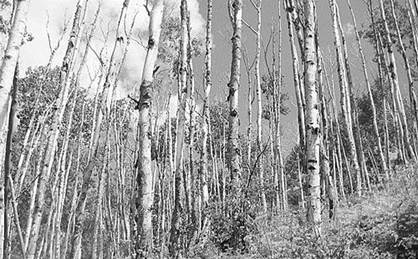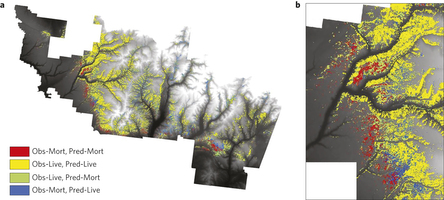


多年来,理解气候变化如何影响森林的微妙之处一直困扰着科学家。据美国《太平洋标准》杂志报道,如今,一项关于哪里的白杨树会在什么时候因干旱和气温升高而死亡的研究正在帮助填补这个知识缺口。
在一项本周发表于《Nature Geoscience》上的研究中,科学家创建了一个展示如果不采取措施减少温室气体排放,干旱将导致美国山杨到2050年普遍死亡的模型。
研究人员将该模型基于对树干中水流量的测定。他们发现,对于白杨树来说,更加致命的并不是降水的缺乏,而是大气增加的对水的需求,因为更炎热和干旱的大气将从树叶中吸取额外的水分。(来源:中国科学报 徐徐)
Tree mortality predicted from drought-induced vascular damage
Abstract The projected responses of forest ecosystems to warming and drying associated with twenty-first-century climate change vary widely from resiliency to widespread tree mortality. Current vegetation models lack the ability to account for mortality of overstorey trees during extreme drought owing to uncertainties in mechanisms and thresholds causing mortality. Here we assess the causes of tree mortality, using field measurements of branch hydraulic conductivity during ongoing mortality in Populus tremuloides in the southwestern United States and a detailed plant hydraulics model. We identify a lethal plant water stress threshold that corresponds with a loss of vascular transport capacity from air entry into the xylem. We then use this hydraulic-based threshold to simulate forest dieback during historical drought, and compare predictions against three independent mortality data sets. The hydraulic threshold predicted with 75% accuracy regional patterns of tree mortality as found in field plots and mortality maps derived from Landsat imagery. In a high-emissions scenario, climate models project that drought stress will exceed the observed mortality threshold in the southwestern United States by the 2050s. Our approach provides a powerful and tractable way of incorporating tree mortality into vegetation models to resolve uncertainty over the fate of forest ecosystems in a changing climate.
原文链接:http://www.nature.com/ngeo/journal/vaop/ncurrent/full/ngeo2400.html



